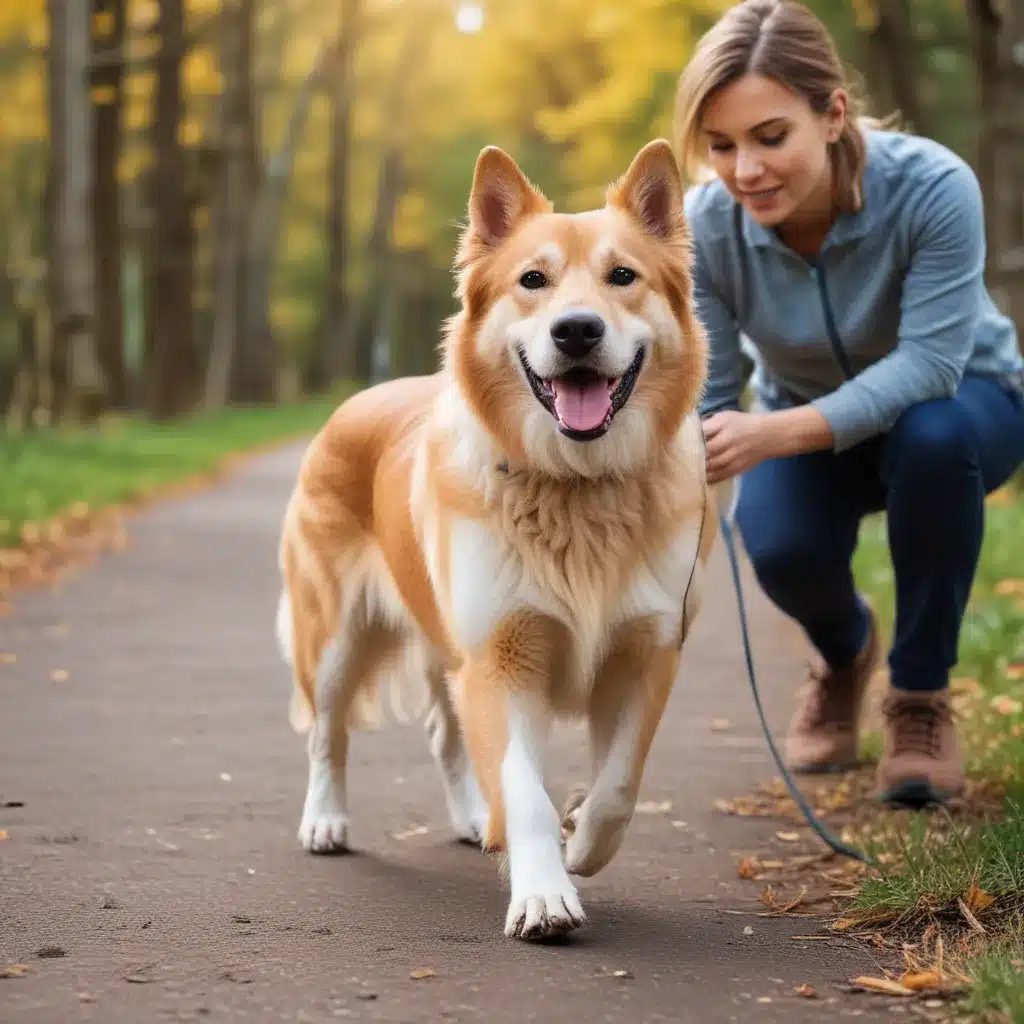
Recognizing the Warning Signs
As a dog owner, I know how important it is to keep a close eye on our four-legged friends. They rely on us to be their advocates, to notice when something is off, and to get them the care they need. That’s why I’m excited to share some insights on one area of pet healthcare that’s been gaining a lot of attention – physical therapy for dogs.
I’ll never forget the day my pup, Daisy, started slowing down on our daily walks. At first, I thought she was just getting a bit older and stiffer. But then she started hesitating to climb the stairs, and I noticed her gait seemed off. That’s when I realized something more serious might be going on.
After a visit to our veterinarian, Daisy was diagnosed with early-stage osteoarthritis. The vet recommended we look into physical therapy to help manage her pain and improve her mobility. I have to admit, I was a little skeptical at first – physical therapy for a dog? But I’m so glad I listened to the expert advice.
Through a combination of massage, targeted exercises, and other treatments, Daisy’s physical therapist was able to get her back to her old self. She’s now bounding up the stairs with ease and enjoying her walks again. It’s amazing what a difference the right care can make.
When to Seek Help
So, how can you tell if your pup might benefit from physical therapy? Here are some common signs to watch out for:
Decreased Activity and Enthusiasm
If your normally energetic dog seems less interested in playtime, walks, or other activities they used to love, it could be a sign of pain or physical limitation. Pay attention to whether they’re reluctant to chase toys, run, or even get up from a lying position.
Difficulty with Mobility
Does your dog struggle to climb stairs, jump into the car, or get up from a resting position? Stiffness, weakness, or joint pain can make everyday movements challenging. Don’t ignore these subtle changes in their mobility.
Vocalizations and Behavioral Changes
If your pup is whining, whimpering, or yelping – especially when you try to touch or move them – it’s a clear indication that something is wrong. Unusual panting, pacing, or changes in appetite can also signal discomfort or pain.
Post-Surgery Recovery
Physical therapy isn’t just for dogs with ongoing conditions. It can also be incredibly helpful for pets recovering from surgery, orthopedic injuries, or other acute traumas. Proper rehabilitation can speed up the healing process and prevent further complications.
The Benefits of Physical Therapy
So, what exactly can physical therapy do for our canine companions? In Daisy’s case, it was a game-changer. The targeted treatments helped reduce her joint inflammation, improve her muscle strength and flexibility, and ultimately restored her quality of life.
But the benefits of physical therapy for dogs go beyond just managing pain and mobility issues. It can also:
- Accelerate post-surgical recovery
- Improve cardiovascular health and endurance
- Enhance balance and proprioception
- Prevent the progression of degenerative conditions
- Potentially even extend a dog’s lifespan in some cases
And the best part? Physical therapy is a completely non-invasive, drug-free approach to pet healthcare. It’s all about using specialized techniques to harness the body’s natural healing abilities.
Finding the Right Practitioner
Of course, it’s important to work with a qualified, certified professional when it comes to physical therapy for your dog. Look for a veterinary rehabilitation specialist who has extensive training in canine anatomy and physiology.
The I Have Dogs website is a great resource for finding reputable physical therapists in your area. You can also check directories from organizations like the American Association of Rehabilitation Veterinarians or the Canine Rehabilitation Institute.
During the initial consultation, your dog’s physical therapist will conduct a thorough assessment and develop a customized treatment plan. This may include a combination of techniques, such as:
- Therapeutic exercises and stretches
- Massage and soft tissue mobilization
- Thermal therapies (hot/cold packs)
- Electrical stimulation
- Hydrotherapy (underwater treadmill or swimming)
And don’t forget – your role as the pet parent is crucial, too. Your therapist will likely provide you with exercises and instructions for at-home care to complement the professional sessions.
Investing in Your Pup’s Well-being
I know it can be daunting to think about adding another expense to your pet care regimen. But when it comes to your dog’s health and happiness, physical therapy is an investment that’s truly worth it.
Just like us humans, our furry friends can experience a wide range of physical challenges. But with the right support and rehabilitation, many of these issues can be managed or even reversed. And the peace of mind of knowing your pup is living their best life? Priceless.
So, if you’ve noticed any of those warning signs I mentioned earlier, don’t hesitate to have an honest conversation with your veterinarian. Physical therapy may be exactly what your four-legged friend needs to get back to their energetic, playful self.
I Have Dogs is committed to helping pet owners like you provide the very best care for your beloved companions. Keep an eye out for more helpful resources and expert insights to support your dog’s overall well-being – from nose to tail!

